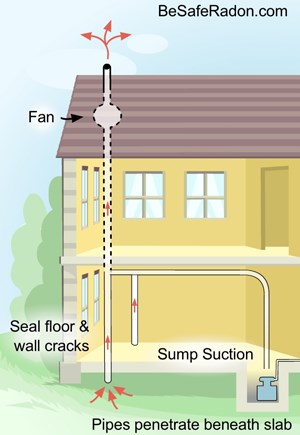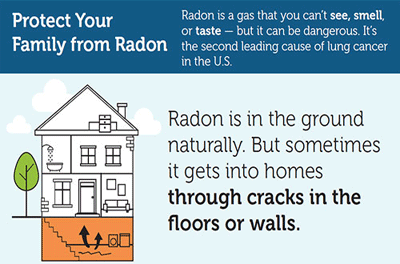Radon gas is present in every single home.
Radon is a colorless, odorless, tasteless gas which is the result of decaying rock and soil. In homes, radon gas emits itself through cracked foundation in basement. While radon gas is not outwardly obvious, radon is far from harmless.
The EPA lists radon exposure as the second leading cause of lung cancer. The effect of radon to an individual depends on how long that person has been exposed, and how much radon gas is in their home. In homes with very high levels of radon, the danger within the air is equivalent to constantly smoking a cigarette.
Radon is measured via air testing through testing cannisters or electronic monitors. We at HomePro use electronic monitors because they are more accurate, as they collect data every hour on the hour and create an average over the span of 48 hours. When it comes to radon gas levels in a home, the EPA deems homes to be safe when their radon level is less than 3.9 pCi/L (picocuries per liter- radon is measured in radioactivity).
In homes with radon gas levels higher than 3.9 pCi/L, a mitigation system is recommended. A radon gas mitigation system is designed to channel the radon gas emitted from the foundation upwards and away from the home. These mitigation systems are generally less than $1,000 and are discrete in appearance.

In Pennsylvania in 2016, the highest radon reading ever was recorded at 6,176 pCi/L. This home was vacant, but it is mind boggling to imagine that a home could be that dangerous.
We encourage everyone to have radon testing when buying a home, or if there home has never been tested. Once the home has been tested, the EPA recommends testing every 2 years, because the radon levels can change. Even if a home has a radon mitigation system already installed, it is important to continue testing to ensure that the mitigation system is functioning properly.
Children in a home with high levels of radon gas are at risk for serious health issues, and pets face an even greater risk of exposure as they spend most of their time indoors. We urge our clients to get their homes tested for radon, as it can truly be a matter of life and death!

Check out more info about radon and the EPA here
